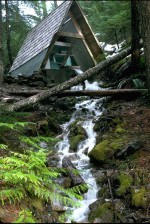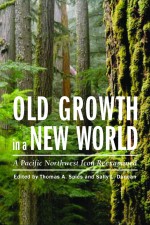Nearly 30 years ago scientists from the Andrews published a Forest Service General Technical Report titled “Ecological Characteristics of Old-Growth Douglas-fir Forests.” That report, which laid out our knowledge of the composition, structure, and function of old growth conifer forests, helped create a sea change in forestry in the Pacific Northwest. During the intervening years forest management on federal lands shifted from a dominance of timber production to management to protect and restore biological diversity and other forest values.
Recently, several scientists from the Andrews (including two who contributed to the 1981 report) produced a book “Old Growth in a New World: A Pacific Northwest Icon Reexamined” (Thomas A. Spies and Sally L. Duncan eds., Island Press 2009). The book considers how our understanding of old growth has changed over the last 30 years and the implications for future forest conservation policies in the Pacific Northwest.
One of the findings of the book is that the power of the old-growth icon to instigate change in forest management across millions of acres of land resulted from a convergence of the science of ecological complexity with society’s needs for mystery and meaning in a post-modern world. The book describes how forest values, including old growth, can be maintained in the future. For example, active management will be needed to maintain or restore some older forests, especially those that have been altered by past logging and fire suppression. It is also clear from the historical perspective of the book that our future ecological and social views of old growth will continue to change.
Old growth is not a static ecosystem or a fixed idea and never has been. Ecologists and social scientists will continue to explore these magnificent forests scientifically and examine our perceptions of them. For example, it is becoming clear that forest values, including biological diversity, cannot be maintained by only focusing on the old-growth stages of forest development.
Old growth is part of a complex web of structural stages that include early seral forests, all of which contribute to maintaining ecosystem structure and function and landscape diversity, and providing ecosystem services. Perspectives from social sciences and humanities are critical if we are to better understand and conserve these forests in a changing social and biophysical environment.
Thomas A. Spies is with the USDA, Forest Service

 Enlarge this image
Enlarge this image
